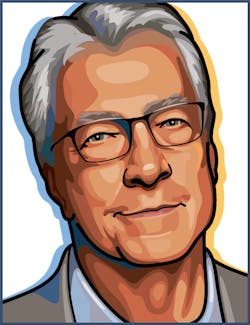
While the Google driverless car has received most of the publicity, the VisLab's BRAiVE autonomous car has been showing off in the streets of Parma, Italy. In July, guided by machine vision and lasers, it drove itself through the ancient city center, negotiating two-way narrow rural roads, traffic lights, artificial bumps, pedestrian areas, and tight roundabouts. All the driving was done with no human intervention for the first time, according to the VisLab team.
VisLab is the Artificial Vision and Intelligent Systems Laboratory of Parma University and it is involved in basic and applied research developing machine vision algorithms and intelligent systems for the automotive field. It has set many milestones since it first put a self-driving car on the road 15 years ago, mostly recently by driving automous vehicles 13,000 km from Parma to Shanghai.
The July 12, 2013 demonstration in Parma is called the Public ROad Urban Driverless-Car Test 2013 (PROUD-Car Test 2013). Take a ride with the VisLab team in this video:
The excellent VisLab PROUD website says that many different sensors are installed on the vehicle, including both cameras and lasers:
- Two frontal cameras locate obstacles (pedestrians, bicycles, other vehicles) on the path, locate and interpret traffic lights, determine the position of lane markings, and reconstruct the terrain profile
- Lateral cameras together with lateral laser scanners handle merging and roundabouts
- A frontal and two lateral laser scanners locate objects such as vehicles, barriers, and tunnel sides
- Two backward looking cameras locate vehicles in adjacent lanes.
More information and videos--especially of the stereoscopic imaging system--may be found on the VisLab website.

Conard Holton
Conard Holton has 25 years of science and technology editing and writing experience. He was formerly a staff member and consultant for government agencies such as the New York State Energy Research and Development Authority and the International Atomic Energy Agency, and engineering companies such as Bechtel. He joined Laser Focus World in 1997 as senior editor, becoming editor in chief of WDM Solutions, which he founded in 1999. In 2003 he joined Vision Systems Design as editor in chief, while continuing as contributing editor at Laser Focus World. Conard became editor in chief of Laser Focus World in August 2011, a role in which he served through August 2018. He then served as Editor at Large for Laser Focus World and Co-Chair of the Lasers & Photonics Marketplace Seminar from August 2018 through January 2022. He received his B.A. from the University of Pennsylvania, with additional studies at the Colorado School of Mines and Medill School of Journalism at Northwestern University.